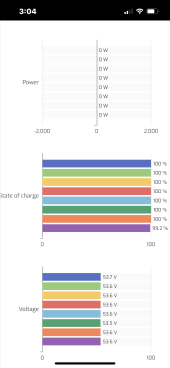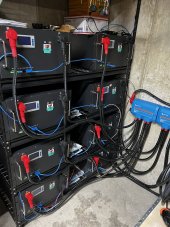Tulex
Solar Wizard
This leads back to my original post in that it's hard to get solid basic info. I really do appreciate opinions. Sometimes that's all one has to work with. But, I believe this is an area that can be clarified to remove opinion.I would offer the OP a bit of a different perspective. Most of the contributors here (although wonderfully generous with their knowledge) are what I would call “solar diy hobbyist/enthusiasts”. Some people just want a reliable system they can build and support and don’t want to worry about every last amp going in/out. I have a SolArk and 34kwh of Trophy batteries that are not in closed loop. Because my system has a lot of unattended time at low draw on the battery bank, the BMS do not register even close to accurate SOC. I am now using a victron shunt and I think I have a much better gauge of the bank’s true SOC.
For me, closed loop isn’t needed, and I don’t think it would benefit me much, in my situation. (The truth is I could never get it to work with the Trophy batteries and I gave up in frustration, but the batteries have been wonderful for over a year now)
I believe most of these "solar diy hobbyists/enthusiasts" are indeed very knowledgeable. I've learned as much from such people in all of my DIY projects as I have from pros. And, some of these people are also pros.
That being said, I believe there should be the ability to state whether or not closed loop with BMS is beneficial, not as an opinion, but as a fact. Sol-Ark works with companies to create this ability. I'm assuming Sol-Ark is doing this because it can use the info to better manage the batteries.
If indeed this is the case, it's a base to work from. A person can then make a decision of what is important to them. But until a simple fact can be established, it's hard to know if one needs to care.
So, your last sentence. Reminds me of what I have been reading about class A batteries that are really class B or worse. One might not know they were duped until a few years into use. I know I can set my unit up to just work. But, if closed loop does actually allow Sol-Ark to better manage the batteries, I may just be able to avoid turning my class A batteries into class B batteries.
So, again, I do appreciate your opinion. I just believe much of this doesn't need to be opinion based.




